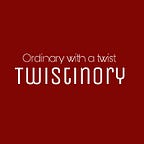Lehenga — All the glitters and Glamour
Nowadays, Lehenga is an obvious choice of a bride as a wedding dress in Indian Subcontinent. Over a period of time, Lehenga has become the must have for festivals, Eid, birthdays and any occasion.
The lehenga, lehnga or langa, is a form of full ankle-length skirt worn by women with intricate embroidery with many patterns and styles. It is lower part of the whole ensemble, typically worn with a kurti, blouse or choli with a matching dupatta on top.
There are a few forms of Lehengas, some are as follows.
A-Line lehenga has A-line hem. It is named after how it looks as per the name ‘A’, which is tighter on the waist and flares out at the bottom.
Flared and double flared, also known as Circular, is a kind of lehenga made with a round skirt pattern and can involve pleats or layers for volume.
Mermaid, also known as Fishtail, Trumpet lehenga looks like fishtail; which is fitted from the waist to the knees and flared from the calves.
Paneled lehenga has several horizontal panels of fabrics stitched together to create the flare of the lehenga, resulting in a more full skirt. These panels can be of same or varying sizes or shapes.
Straight lehenga has a straight silhouette without any space for its pleats or gathers for fullness. Instead, a side slit is sometimes provided for easy movement; it is suitable for occasional wear.
Trail lehenga involves an extra portion of the fabric in the back, creating a train.
It is fairly time consuming to make a lehenga because of the hand embroidery of different materials.
The influence of Lahnga on Indian Subcontinent bridal fashion has always been present, but during the colonial period, lehnga was introduced to Lahore, Pakistan. This new style was designed for women with voluptuous figures. These brides were considered to be very beautiful. As a result, the style became popular among the upper class of society. However, it was soon discouraged in the later years. Today, it is still fashionable to wear lehnga on a wedding day in Pakistan.
Lahnga on wedding dresses gained further popularity after the Second World War. However, they remained out of the limelight during the festivities until later years. Many modern bridal fashions are inspired by the traditional styles of wedding in Pakistan. These include heavy embellishments on the veil, long flowing gowns, intricate headdresses and rich, floral bouquets and lahngas fit right in.
Nowadays, designers from Pakistan are designing their own bridal wears, which are influenced by international patterns and styles and infusing them in traditional bridal wear. This has given rise to a new trend of Pakistani bridal wear.
Lahnga on marriages is very much prevalent in Pakistan. There are various wedding ceremonies held in this traditional style of dress, which symbolizes the essence of traditional, customary and modern cultures. Some of the most popular bridal fashions are: Anarakali Suit, Bell Bottom Suit, Bogra Suit, Chanakya Suit, Delhi Bollywood Style Suit and many more. All these are available in various designs, colors and styles, making them ideal bridal attire for all types of wedding ceremonies. Most Pakistani brides prefer to wear these styles of bridal wear during their weddings.
The influence of Lahnga on Indian Subcontinent wedding ceremonies can be traced back to its conception during the seventeenth century. Its origin was attributed to a Punjabi lady called Nizhnath, who invented a style of wedding ceremony, which was characterized by a long, flowing dress and veil. This marked the beginning of a new era in which the bridal wear of the women were greatly emphasized, in terms of elegance, tradition and grandeur. Although there have been many changes and modifications in the wedding traditions of the Punjab people, the old customs and styles are still very much prevalent, as evident from the huge crowd at various wedding ceremonies.
The bridal wear of today is highly embellished and highly fashionable. A bridal gown can go a long way in complementing the wedding theme and selecting the right type of traditional bridal wear can add a sense of style and sophistication to your wedding. Traditional bridal wears of the Punjab people have been kept alive and well for several decades now, which is another reason behind the popularity and recognition they enjoy. With such a rich heritage and culture, it is not surprising that the brides love to wear the traditional bridal wear at their weddings.
Courtesy: Pictures provided by www.aran.pk
